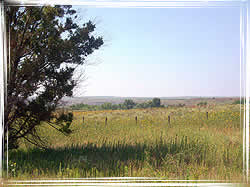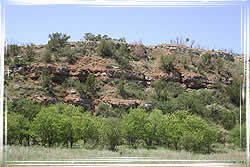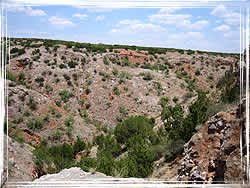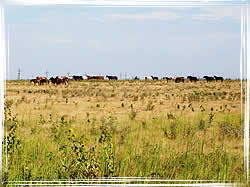Texas Eco-Regions
South Texas Plainsback to Eco-Regions Map
Elevation
Elevations range from 300 to 1,100 feet above sea-level.
Precipitation
Easternmost regions receive around 23 inches per year on average while westernmost regions receive around 19 inches per year on average.
Topography
Topography is considered almost flat to gently rolling. A few major rivers run through the north and northeastern portion of this region forming bottomland ecosystems.
Soils
Soils are primarily acidic sands. Flats with poor drainage often contain huisache and some mesquite trees. Droughty flats and ridges with gravelly or rocky soils that have better drainage contain shorter mesquite, blackbrush, cenizo, etc. Larger rivers in the area are associated with deep alluvial soils, loamy to sandy in texture.
Vegetation Description
Often known as the Tamaulipan Thornscrub or “brush country”, this region of Texas is known for shorter trees and numerous shrubs, most of which contain thorns. Because of the hot dry weather, leaves are commonly small and often compound. The short height and dense, small leaves give the region an appearance of impenetrable shrubland. Honey mesquite is the primary tree in the region; however, many other trees and shrubs dominate on other sites. The flats and ridges host honey mesquite, huisache, blackbrush, guajillo, cenizo, Texas mountain laurel, and Spanish dagger. Shallow arroyos or rocky draws often host additional species such as spiny hackberry, bluewood condalia, Texas persimmon, lime prickly ash, guayacan, and kidneywood.
Impacts of Fire
Fire historically played a role in shaping the South Texas Plains. Grasses were thought to be a major component of the region prior to settlement. As grasses were grazed by livestock, the fragile soil structure eroded away leaving mostly rocky, dry soils which are now able to support mostly woody species. Now that much of the grass layer is gone, fire is not able to play much of a role except in extreme drought situations or when the land is managed for grass and fire re-establishment.
Historical Information
Fire historically played a role in shaping the South Texas Plains. Grasses were thought to be a major component of the region prior to settlement. As grasses were grazed by livestock, the fragile soil structure eroded away leaving mostly rocky, dry soils which are now able to support mostly woody species. Now that much of the grass layer is gone, fire is not able to play much of a role except in extreme drought situations or when the land is managed for grass and fire re-establishment.





